
In a delightful experiment, I uploaded a serene picture of a cruise ship deck to three AI models — ChatGPT, Grok, and Claude — and prompted them to “Describe this in detail.” The results? A fascinating glimpse into the capabilities of AI vision paired with natural language processing. Let’s dive in!
The Contestants: AI Takes on Cruise Serenity
Each model provided its own take on the image. Here’s a quick recap of what they spotted:
ChatGPT’s Take
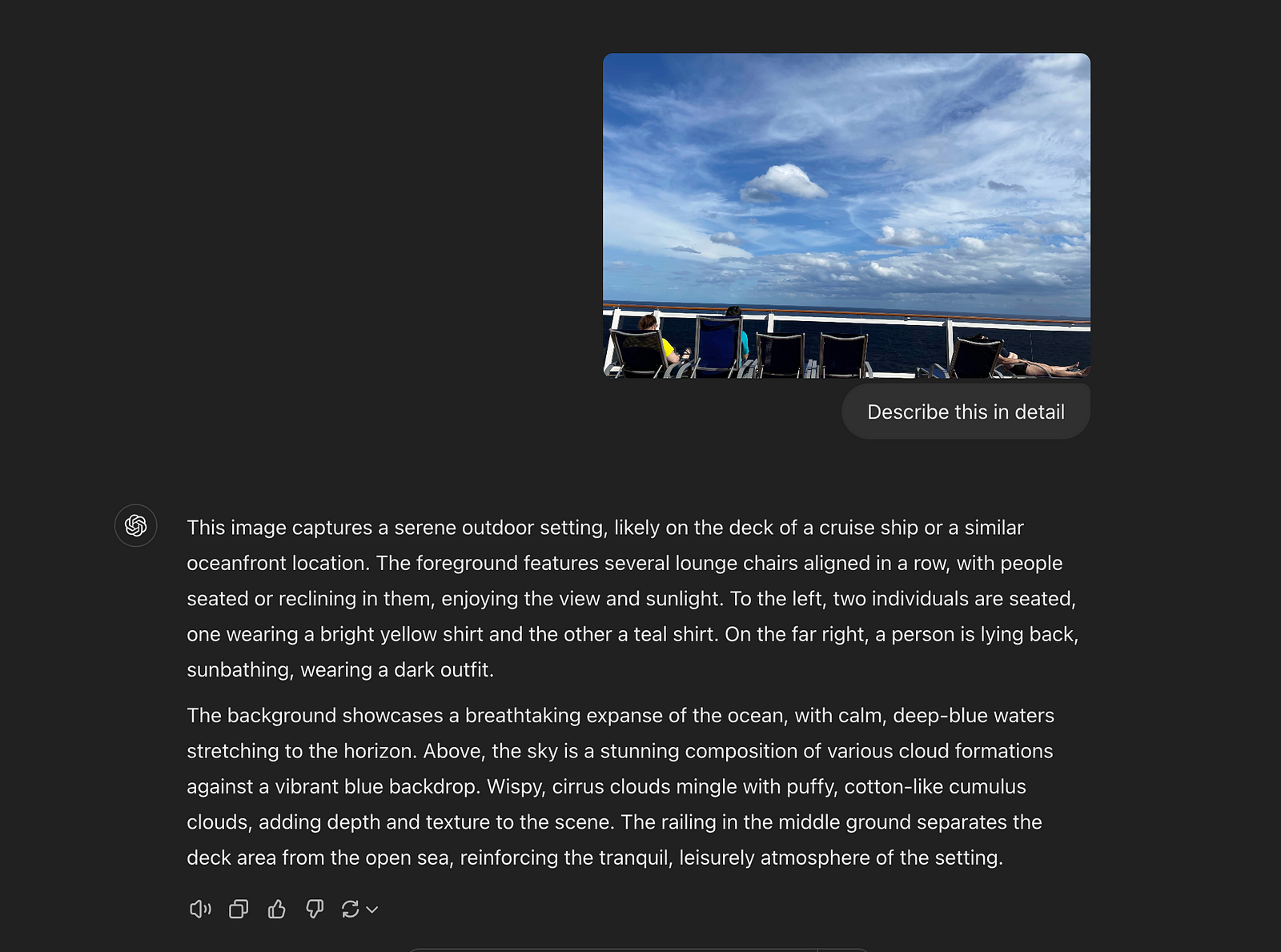
ChatGPT painted a rich and detailed scene, focusing on the dramatic interplay between the deep blue ocean and the painterly sky. It captured the cruise deck’s layout, the specific design of the chairs, and even guessed the lighting — suggesting midday. What ChatGPT missed? A certain ship lingering faintly in the distance. It’s like ChatGPT focused on the main characters but forgot about the extras.
Grade: 8/10
Grok’s Take
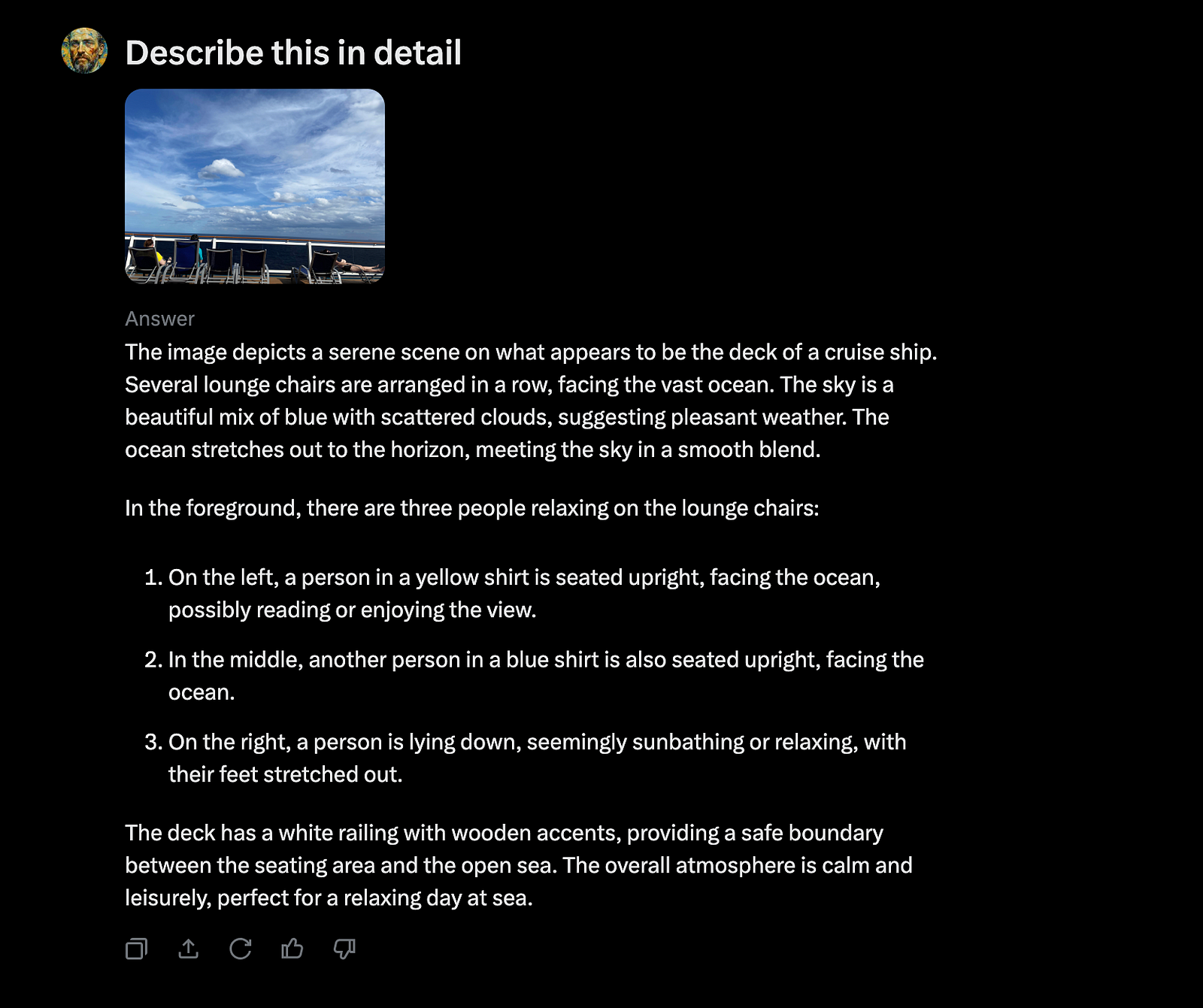
Grok brought personality to the scene. It not only described the layout of the deck and the lounge chairs but also noticed a person in a yellow shirt, one in blue, and another lounging in relaxation. Its description felt personable and captured the serenity of the moment. However, no mention of that ship on the horizon. Grok, like Claude, seemed transfixed by the foreground.
Grade: 8.5/10
Claude’s Take
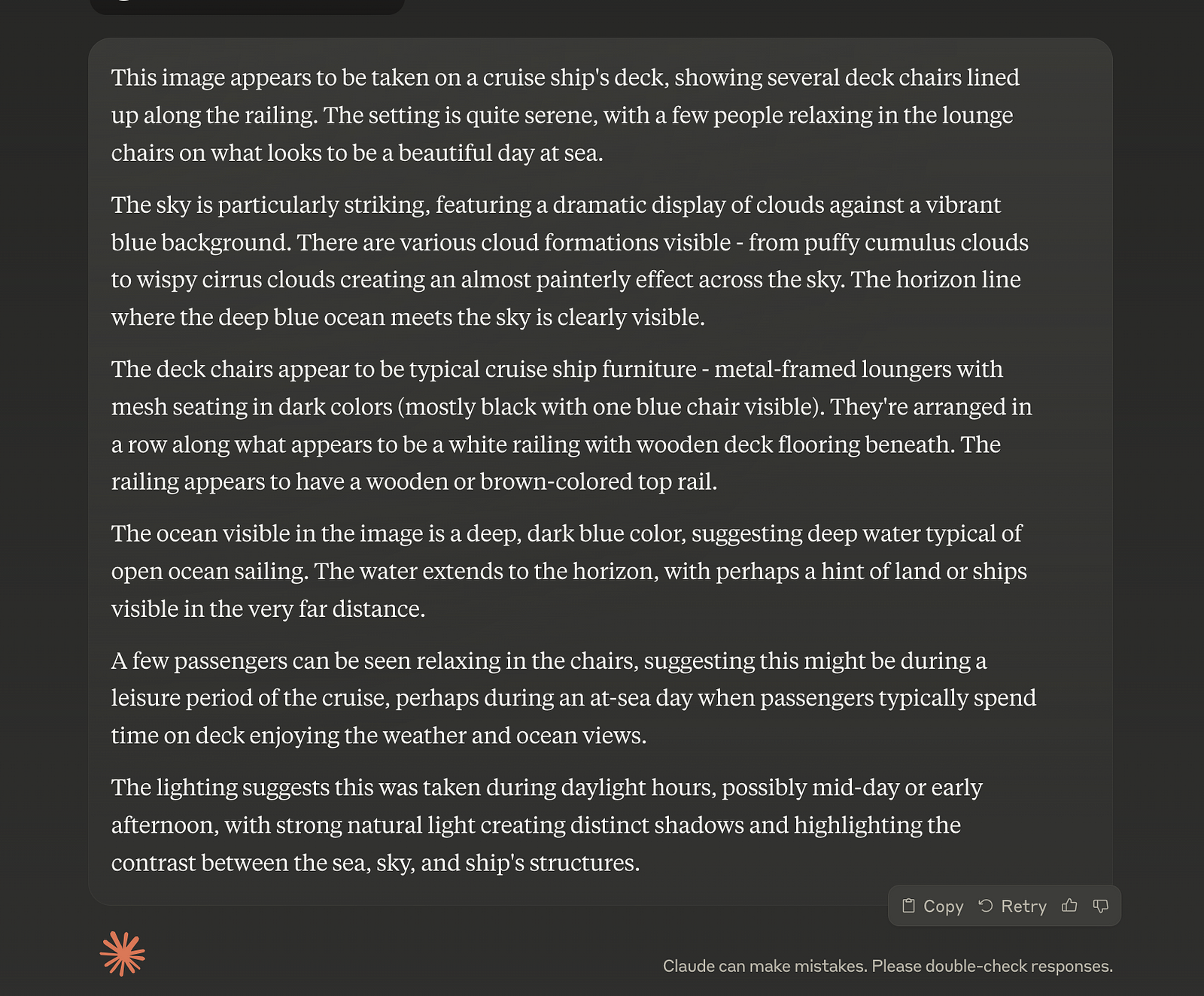
Claude delivered a vivid narrative that was both poetic and precise. It identified not just the cloud patterns and chair details but also… the ship in the distance! That little detail took the analysis to the next level. Claude’s description balanced atmosphere with precision, leaving the feeling that it truly “saw” the scene.
Grade: 9.5/10
How Does This Technology Work?
AI image analysis combines two powerful technologies: computer vision and natural language processing (NLP).
Step 1: Seeing the Picture
The image is first processed using computer vision algorithms. These algorithms:
- Break the image into pixels and analyze patterns.
- Identify objects, textures, and spatial relationships.
- Apply pre-trained models (often using convolutional neural networks or CNNs) to recognize elements like “chair,” “sky,” or “ocean.”
Step 2: Understanding the Scene
Once objects are identified, the AI applies contextual models to make sense of what it sees. Is that a chair or a deck chair? A ship or a blurry smudge? Models are trained on millions of images to understand context, composition, and probable relationships between objects.
Step 3: Writing a Description
After analyzing the image, the AI leverages NLP to craft a description. This involves:
- Synthesizing key details (e.g., “a deck with lounge chairs”).
- Adding context and flair (e.g., “a serene day at sea”).
- Balancing precision with readability.
Other AI Models to Consider
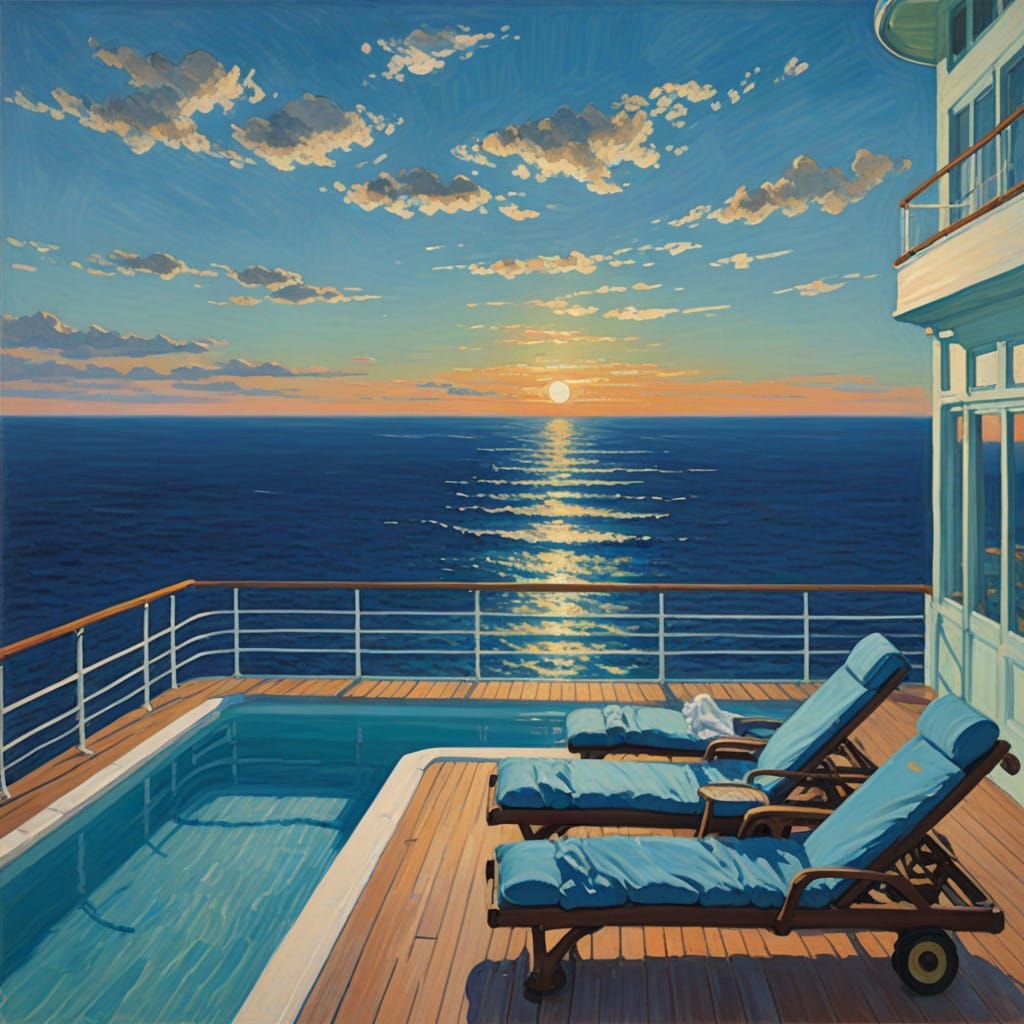
If you’re blown away by this trio, there’s one model you should check out: Google’s Imagen. Known for its hyper-realistic image generation and scene analysis, Imagen could give these models a run for their money. Additionally, OpenAI’s DALL-E 3 pairs image generation with captioning capabilities for some astonishing results.
The Secret Weapon: iPhone Photo Search
Speaking of impressive tech, your iPhone’s photo search is a low-key powerhouse. It uses AI to:
- Recognize objects, people, and locations in your photos.
- Search using keywords like “beach,” “dog,” or even “cruise deck.”
- Identify text within images (hello, receipts and signs!).
This functionality extends to details you might not even recall. Looking for “blue shirt” in thousands of photos? iPhone’s got your back.
The Takeaway
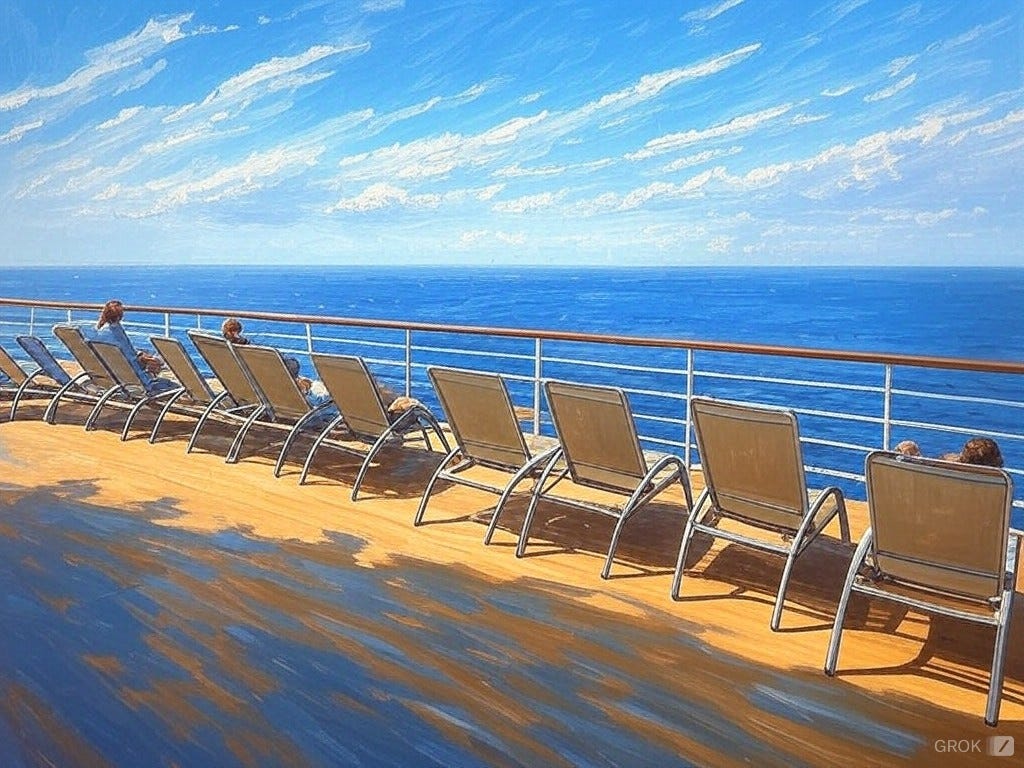
AI image analysis is no longer just about identifying cats in pictures (though it’s great at that too). These tools offer nuanced, context-rich descriptions that can turn your snapshots into narratives. Each model has its strengths, but Claude’s ability to notice that distant ship made it the MVP of this round.
Simplified AI Art Prompt
Create an impressionist masterpiece of a serene cruise ship deck, with lounge chairs facing the vast ocean under a sky scattered with wispy clouds. Focus on the vibrant interplay of blue hues in the water and sky, evoking a peaceful, endless horizon.
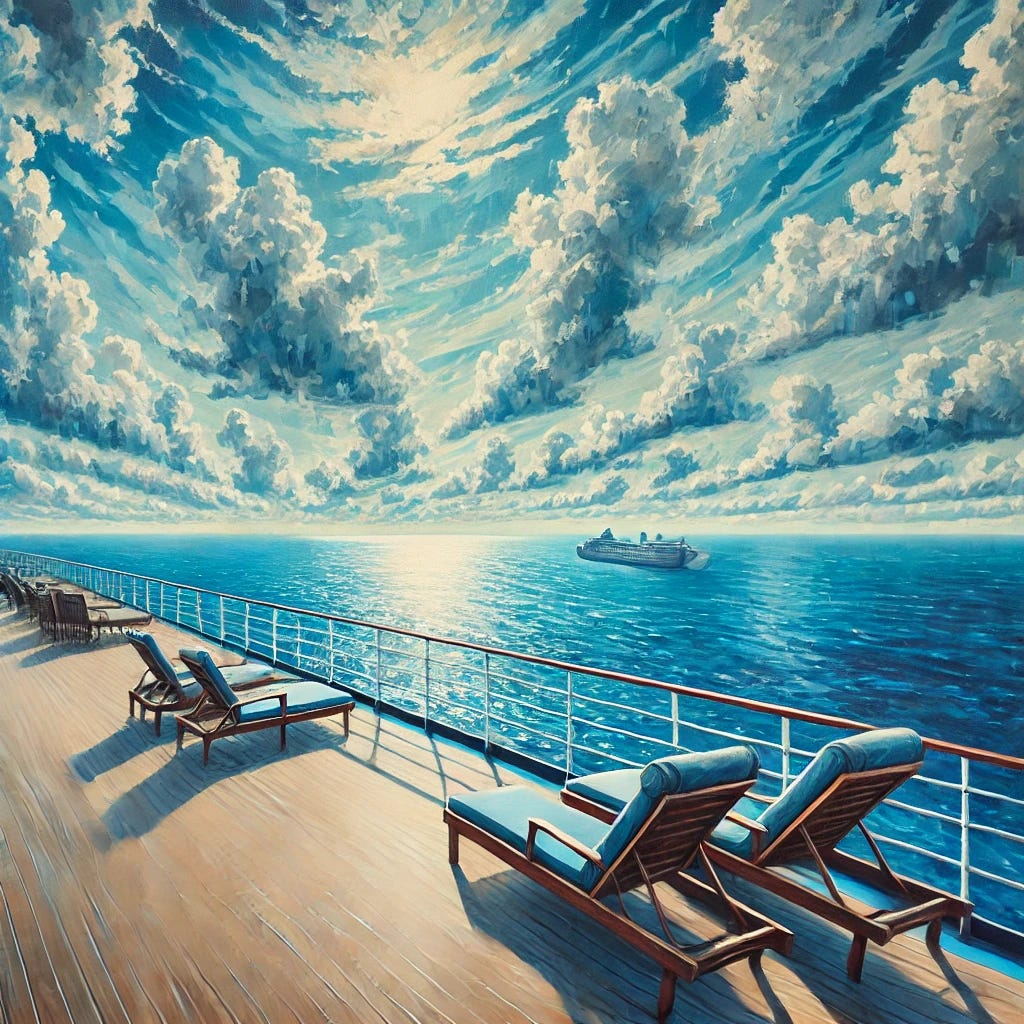
Let’s Talk!
Which AI model do you think nailed the analysis? Have you tried using AI for image analysis or captioning? Drop your thoughts in the comments, and don’t forget to follow for more experiments with AI creativity!